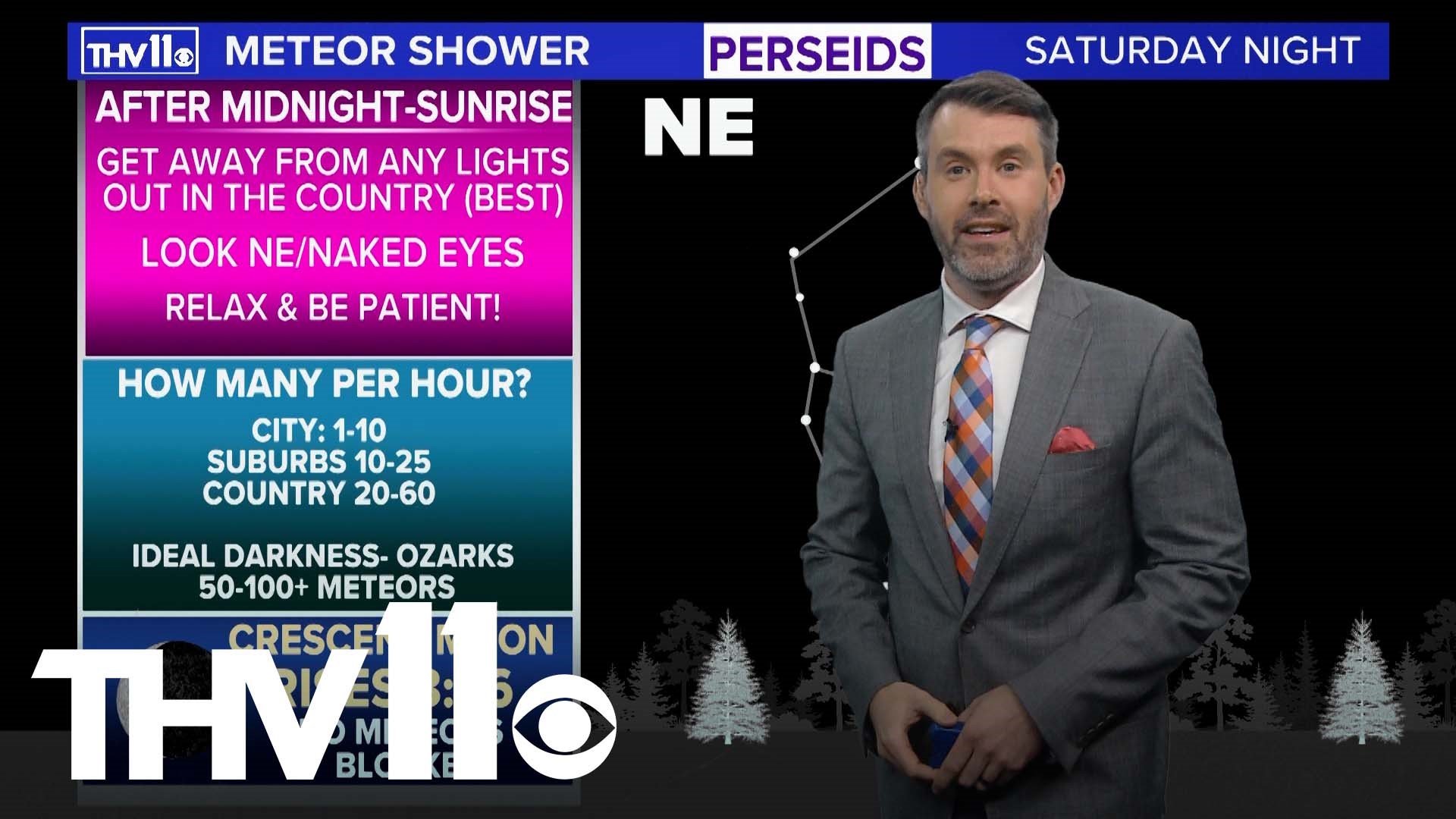LITTLE ROCK, Ark. — This week one of the best meteor showers of the year will peak on August 12-13. If you have never seen a meteor or “shooting star” this will be your chance!
There are several meteor showers that you hear about through the year, but the one’s that really matter and are worth checking out are the Perseids in mid-August and the Geminids in December.
This year the Perseids are going to be spectacular, because the moon will not interfere with washing out any of the fainter meteors.


To see the meteor shower you need to have a clear view of the sky especially looking north and northeast where the constellation Perseus is located. This is where the meteors may seem to travel from, however you will see meteors in any part of the sky.
Get comfortable, because you should spend at least 30 minutes viewing the sky to see several streaks of light zip through the darkness.
Some will be very faint, others might surprise you and glow for few seconds before disappearing. If you are really lucky, one meteor could be so bright it cast shadows! THV11 meteorologist Nathan Scott said that he's seen this once in his life and described it as a surreal experience.
Since you will be looking up at the sky, the best way to view the shower is lay back on a chair or lay on a blanket. You don’t want to look up at the sky for more than 5 mins because you will get neck pain.
There is no need for a telescope or binoculars. Just scan the sky with your naked eyes and try not to blink too much. If you blink you could miss them. Also wear long sleeves and bug spray. The mosquitoes will find you and can ruin the fun.
The best time to check out the meteor shower will be Saturday night into Sunday morning. The key factor in seeing as many meteors as possible will be clear skies and getting away from any light pollution.
So, how many meteors can you see?
If you live in a city, you will have the chance of seeing only the brightest meteors, which will range from 1-10 per hour. But if you're in the suburbs 5-20 meteors are possible.
In the country away from light pollution, 20-40+ meteors per hour will be possible. However, those enjoying the darkest night sky, for example in the Buffalo River Wilderness areas of Newton and Searcy counties, could witness a spectacular show of 50 to 100+ meteors per hour!
So, why exactly do these meteor showers happen?
Well, this meteor shower is caused by debris being left from a Comet Swift-Tuttle that crossed Earth’s orbit back in 1992.
As the Earth passes through this field of dust and rock, those pieces burn up in the Earth’s atmosphere causing vivid streaks of light. Most are just a grain of sand, but some can be larger than a pebble as the result is a bright light that produces a trail that lasts for a few seconds.
Let’s hope for clear skies because currently it does appear that there will be clouds in parts of the area for the big show.
Keep track of how many meteors you see, get the kids involved, and make memories with the family!

